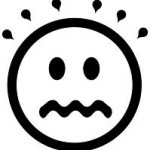 Dawn asked: Could you give an example of the difference between internal and external perfectionism?
Dawn asked: Could you give an example of the difference between internal and external perfectionism?
I replied: I’ll go ahead and use the explanation straight out of my book. From The Right Side of Normal, Chapter Eight, “Loves to Learn:”
“The two different brain processing preferences tend to favor two different types of perfectionism. A left-brained person tends to exhibit external perfectionism. This is when they want to exact perfection on everything they do and others do because they thrive on accomplishment (products). An external perfectionist might think, “I want a perfect product; I’m frustrated because I want it to turn out right.” A right-brained person tends to exhibit internal perfectionism. This is when they want to exact perfection on everything they do and others do because their creative expression (process) is an extension of how they feel about themselves. An internal perfectionist might think, “Why am I so stupid? Why can’t I get this right? I’m no good!” Because many right-brained learners tend to be highly sensitive (see the work of Elaine Aron in The Highly Sensitive Child), this tendency to internalize the effect of their actions or products makes sense. Interestingly, both perfectionist acts can look similar to one another; the difference is in the motive and inner effect.”

When my 4-year-old perfectionist artist son noticed a discrepancy between he and his father’s drawing ability, he stopped drawing.
Two examples from my children are my artist son and my writer daughter. My artist son tends to particularly direct his perfectionism toward his drawing ability. He actually first exhibited it at about 4 years old. Right now, he’s a “struggling artist,” trying to make it as a manga artist as an entrepreneur. He’s really hard on himself and when what he’s trying to create doesn’t match up with what he knows is better ability, he turns on himself. The first thing he says is, “I don’t know why I’m trying to make it as an artist. I stink.” He directs his external inability toward his internal self.
My writer daughter is the classic, “If I can be accomplished, then I’m worthy.” In other words, she felt her achievements gave her worth. There came a time in her life when she wasn’t able to achieve, and she felt worthless. She entitled a blog post about it, What Makes Me Significant?
Most of my perfectionism is classified as external perfectionism. I want something to turn out perfectly, and I’ll put in the hours and hours of work until it’s achieved. If it isn’t coming about, I just work harder and more intensely. I want what I want to turn out perfectly, and it not coming about just makes me go at it more. Interestingly, I knew this about myself when I went into homeschooling. One of the conscious choices I made was to not place my external perfectionism on my children, but on the learning environment and on my ability to understand my children. So, I’ve poured hours and years into reading books, observing, taking notes, and researching. Thus, why a book came about as a result!
The upside to an external perfectionist is that they have a lot of perseverance. The downside to an external perfectionist is that many times they place that on their loved ones which results in others not feeling good enough.
The upside to an internal perfectionist is that they put a lot of emotion into their creations. The downside to an internal perfectionist is that many times they are hard on themselves which often results in anxiety.
Are you an external or internal perfectionist? Can you share an example?






Pingback: Strengths-Based vs. Weakness-Based Education |